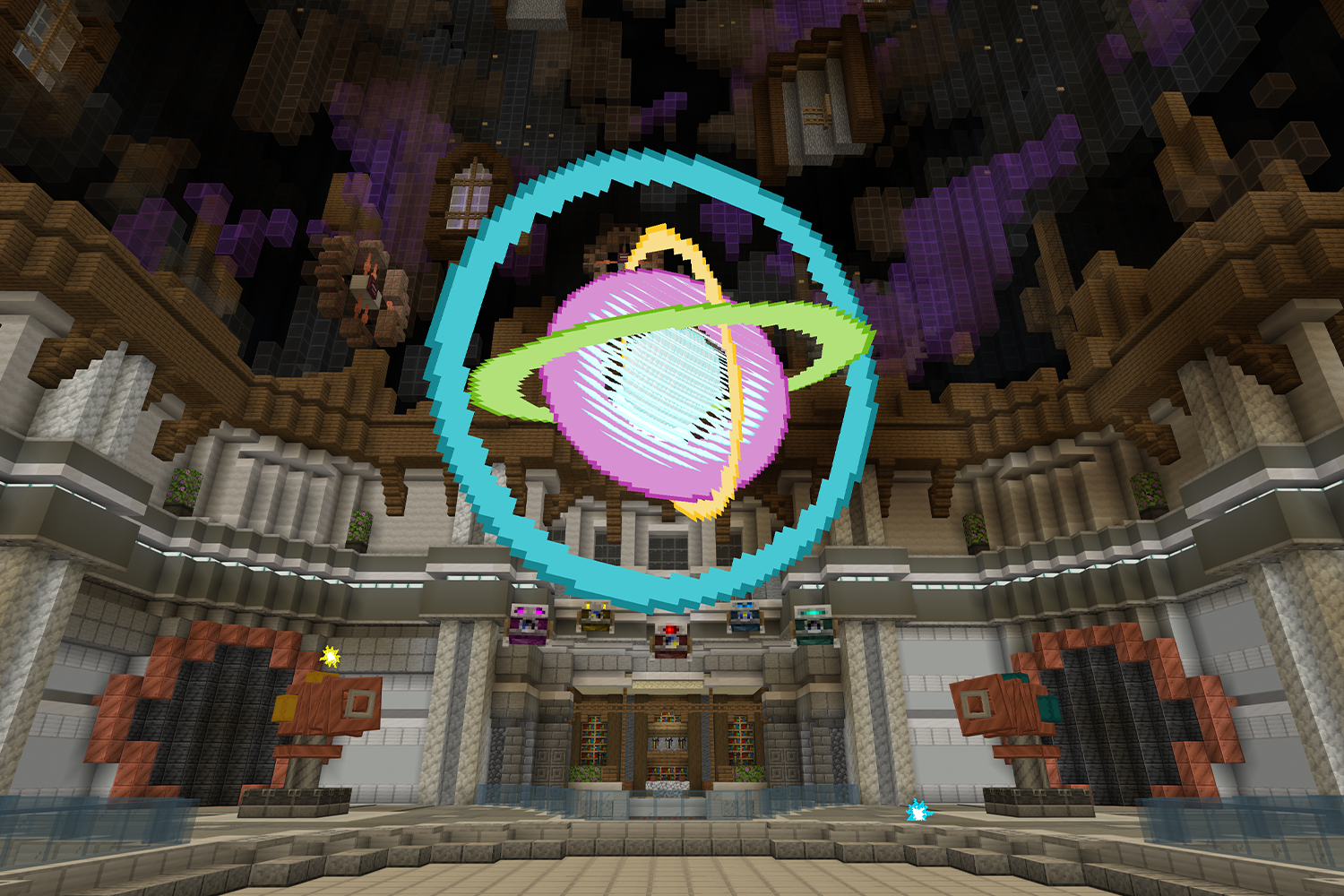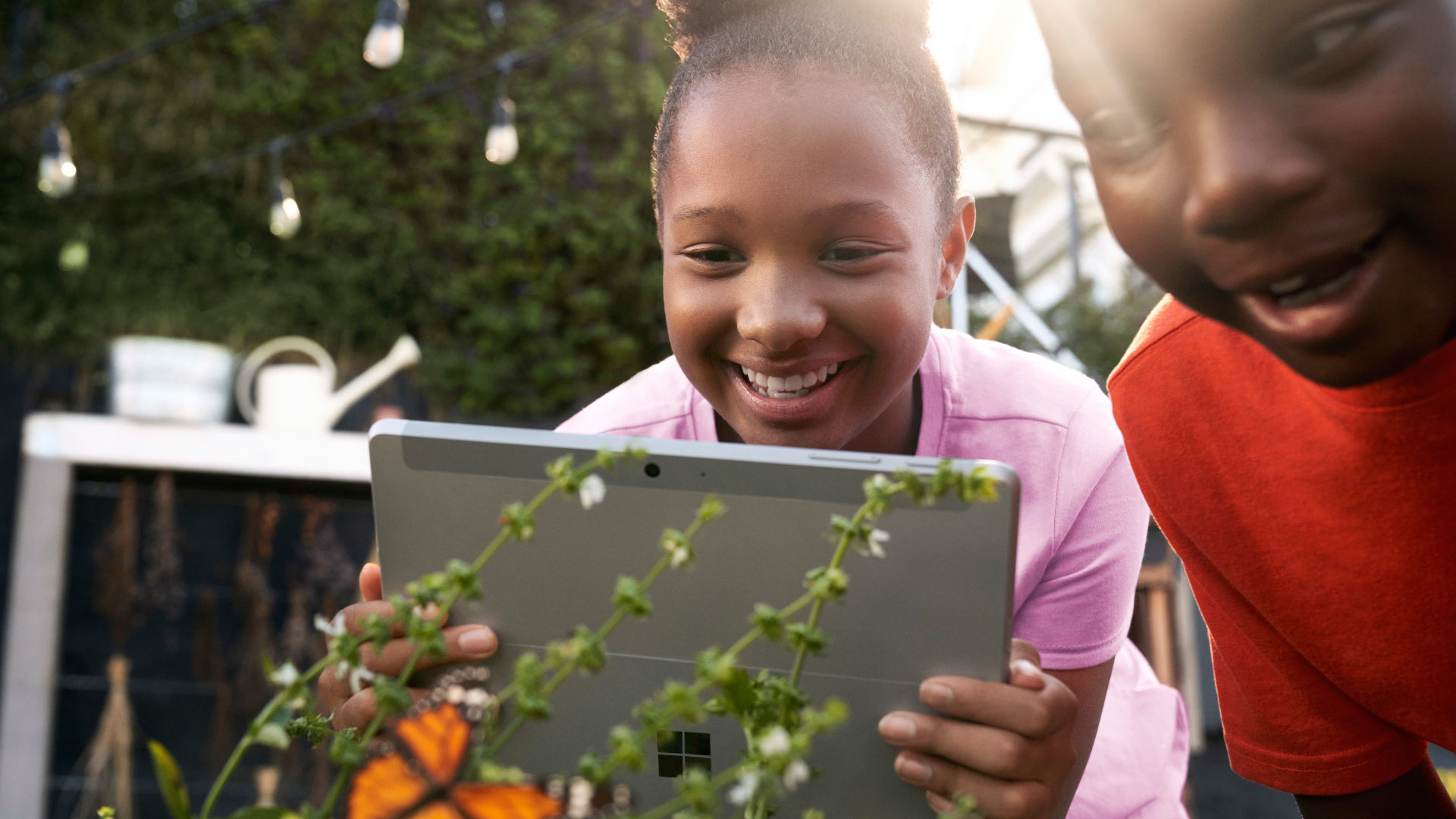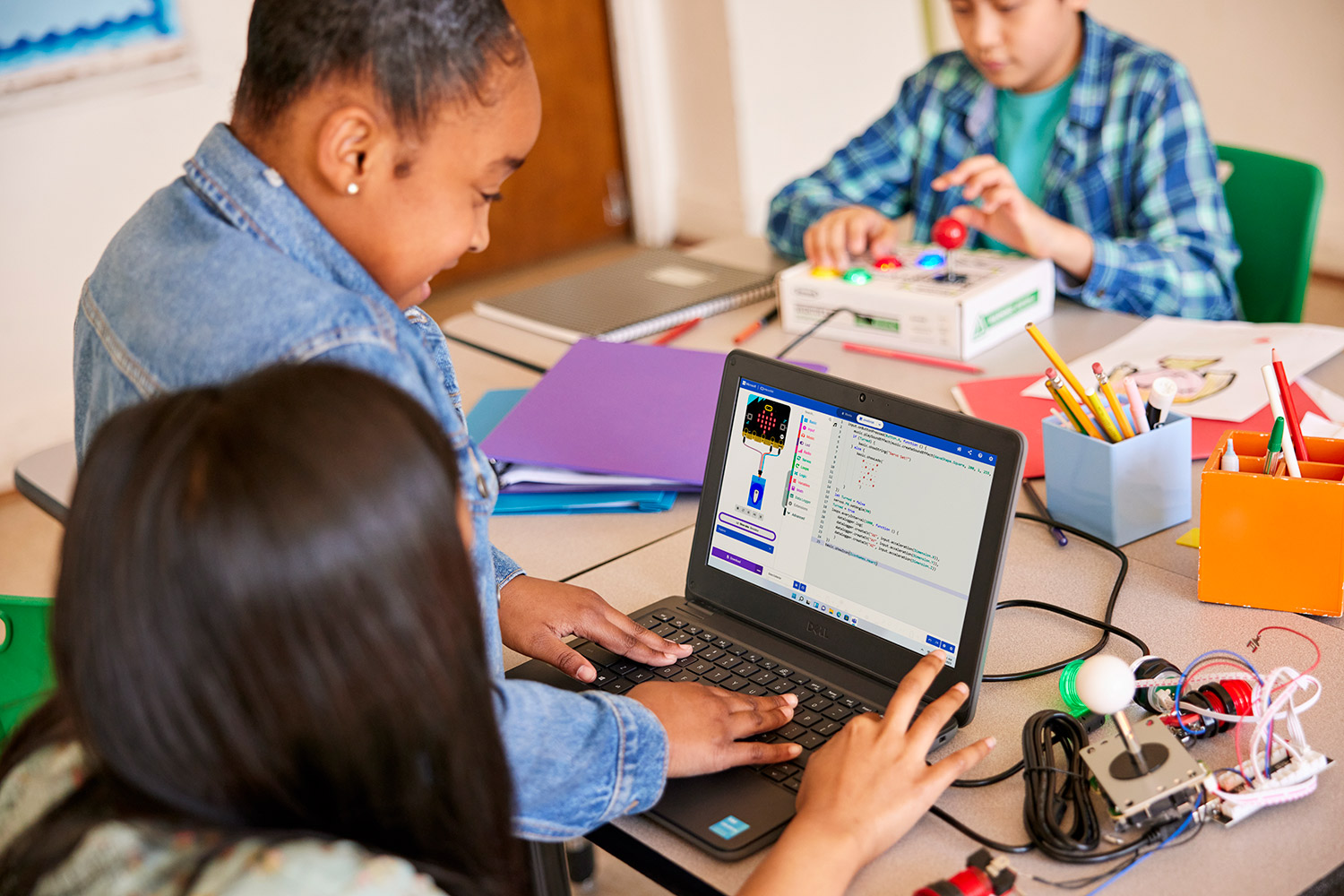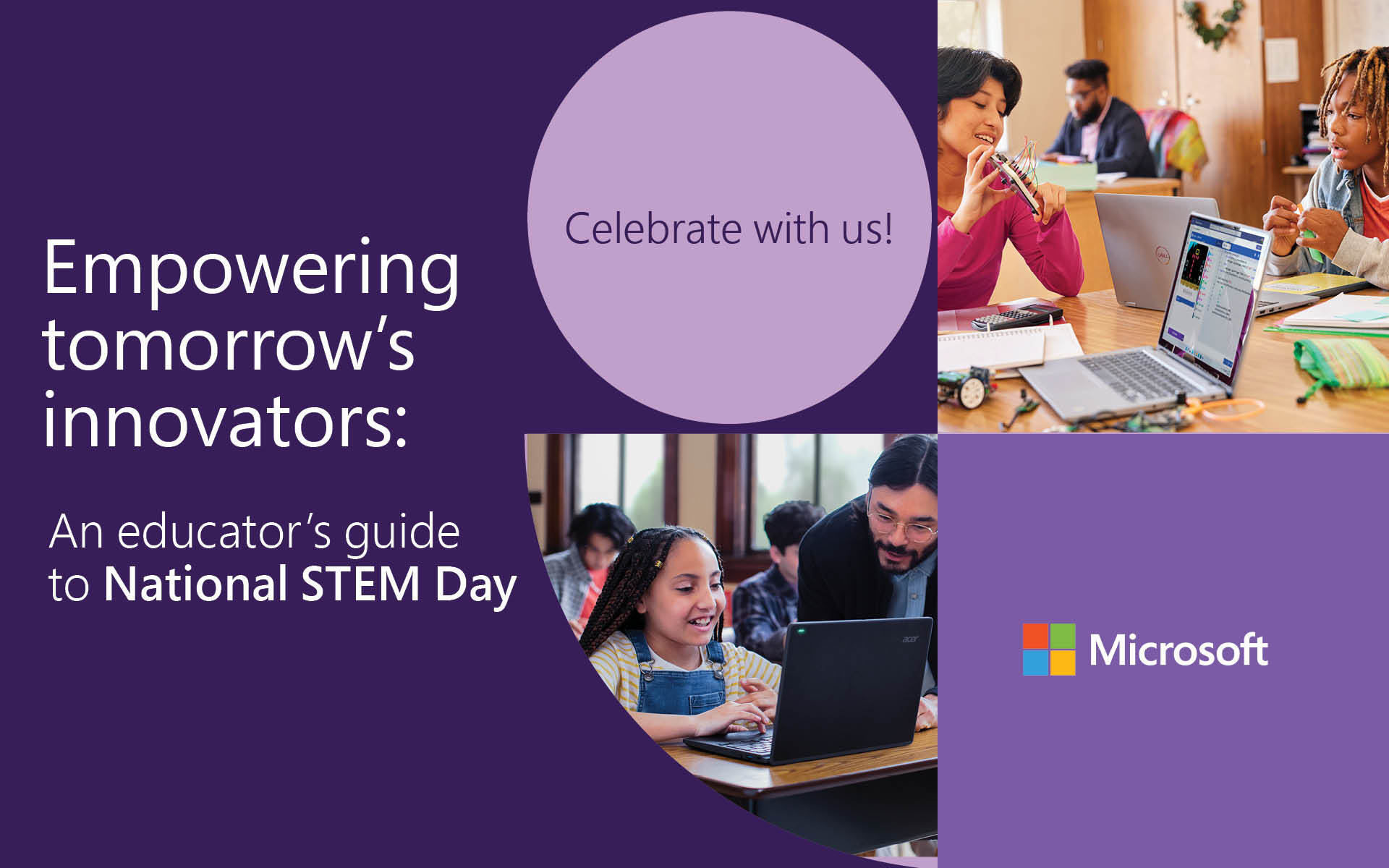Students everywhere love the imaginative, blocky world of Minecraft. Minecraft: Education Edition gives learners the opportunity not only to create, survive, and work together in immersive game worlds, but also to explore computer science (CS), a critical skill for the future of work. Code Builder is a special feature for Minecraft: Education Edition that empowers students to develop foundational computer science skills within the Minecraft landscape, learning to code with blocks and Python. With tons of engaging content aligned to CS standards and free teacher training, anyone can teach coding with Minecraft.
Impact of computer science
According to the U.S. Bureau of Labor Statistics, computer science careers are expected to grow by over 600,000, a 15 percent increase, by 2031. Unfortunately, computer science courses are not available for all learners in US schools. Presently, only 53 percent offer computer science courses.
The curriculum and training offered by Minecraft: Education Edition provide an entry point for schools and educators to adopt and teach CS curriculum. Designed for learners from pre-literacy through high school, Minecraft’s CS progression offers opportunities for students to develop computational thinking and practice both block-based coding and Python. It is built on three tenants that guide the code building experience.
- Drive meaningful learning through integrating real-world issues in immersive, imaginative worlds
- Prepare for digital future by developing computational thinking skills with in-game coding and curriculum
- Build social-emotional skills like empathy and learn digital citizenship
Code Builder is an in-game coding feature that integrates with Microsoft MakeCode and Azure Notebooks, providing an easy, drag and drop canvas for students to create programs to run in Minecraft. The MakeCode interface within Code Builder offers step-by-step directions as students get started so they can become accustomed to various blocks and ways they can customize them; it’s a fun and easy way to learn the basics.
Check out Code Builder in action for this delightful introductory lesson in block coding with MakeCode.
Get set up to code in Minecraft: Education Edition
To introduce coding into the classroom with Minecraft, use this three-part process:
1. Get set up
Before introducing coding to students, build your own foundation. Remember, you don’t have to be a coding or Minecraft expert. It’s as easy as downloading and installing Minecraft: Education Edition onto your device, trying a simple demo lesson with Hour of Code, and exploring training opportunities.
If you’re new to coding, open the app and try the Hour of Code demo lesson. You’ll learn how to code using blocks with Microsoft MakeCode, the starting point for students too. Go beyond that first hour with easy starter lessons, professional development, or classroom challenges.
Minecraft: Education Edition offers more than 25 hours of free online trainings designed for educators to teach Computer Science. If you’re totally new to Minecraft, start with the Minecraft Teacher Academy, 3 1-hour modules on how to use Minecraft with educational strategies for classroom integration. Check out the 1-hour free online training Intro to Coding with Minecraft to bring coding into your classroom with confidence.
2. Teach with Minecraft
Once you’ve explored the basics on your own, you’ll be ready to teach coding lessons. Minecraft: Education Edition offers a CS progression for primary to secondary learners, helping progress students from block-based coding to Python with standards-based content. With 200 hours of CS content for all levels and abilities, you’re sure to find what you need. Each lesson includes educator resources, rubrics, and Minecraft files to help students have fun while developing computer science skills.
If you’ve done Hour of Code already and are ready for the next step, start with Computing with Minecraft, a 30-hour, 10-unit set of materials based on CSTA standards that teaches learners about conditionals, functions, coordinates, and more in block-based coding.
Here are some other example lessons that utilize Code Builder to teach computational thinking:
- Hour of Code: Escape Estate is the latest one-hour intro to coding lesson in the annual Hour of Code series. Students complete puzzles with code to escape a mysterious mansion.
- Compute a Zoo challenges students to use block-based code to create a zoo entrance and animal enclosures.
- Sea Turtle Assistance bridges biology, ecology, and computer science as students use algorithms to help protect sea turtles.
- In Python 101: Lesson 9, students decompose problems and write code to design a game.
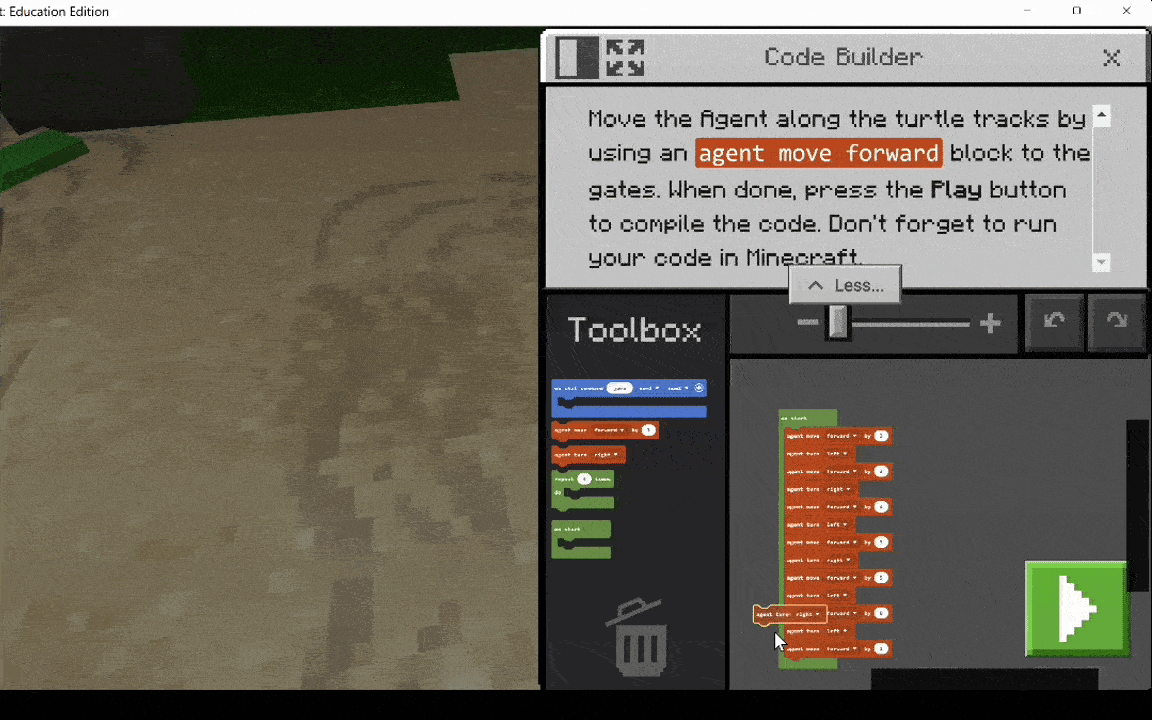
In addition to lesson plans, Minecraft: Education Edition features regular build challenges that engage students’ creativity and strengthen 21st-century skills. Here are two fun Code Builder challenges:
- Harvest Time has students take on multiple tasks to improve harvesting efficiency and then use creative coding skills to carve a pumpkin.
- In Number Line Railroad, students explore the relationship between numbers by completing a number line and connecting the railroad segments.
3. Find your community
Visit the Community page to join Minecraft: Education Edition’s global community of educators and peer mentors. Meet and learn from passionate educators, gain access to new lessons and teaching resources, find upcoming events, and bring immersive learning to your students.
Connect with the experts within your classroom to help you explore teaching with Minecraft. Schools around the country, including Atlanta Public Schools, have established Student Ambassador programs where students serve as Minecraft experts for educators and peers. Sign up for an upcoming Student Ambassador training cohort or take the free online course on Microsoft Learn.
Celebrate computer science with Hour of Code
Another exciting way to bring Code Builder into the classroom is through Minecraft Hour of Code, a series of fun, engaging coding tutorials for any learner—including educators and parents! Hour of Code is a global initiative designed to demystify coding and broaden participation in the field of computer science.
In the newest Minecraft tutorial, Hour of Code: Escape Estate, students learn basic coding concepts to escape a mysterious mansion by dawn. Along the way they will solve puzzles using computational thinking to unlock secrets, open trap doors, and reveal hidden clues. Minecraft Hour of Code is available as a free demo lesson, so anyone can download and play.
Check out the trailer to the new Minecraft Hour of Code!
Minecraft: Education Edition helps students prepare for the future by prioritizing digital fluency skills, promoting community, encouraging a coding mindset, and teaching computational thinking. Begin your computer science journey today!

